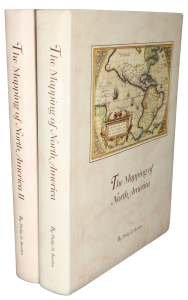Rare Maps and Prints
- World & Celestial
- North America
- West Indies, South & Central America
- British Isles
- British Isles
- English counties
- Large-scale
- Bedfordshire
- Berkshire
- Buckinghamshire
- Cambridgeshire
- Cheshire
- Cornwall
- Cumberland
- Derbyshire
- Devon
- Dorset
- Durham
- Essex
- Gloucestershire
- Hampshire
- Herefordshire
- Hertfordshire
- Huntingdonshire
- Islands
- Kent
- Lancashire
- Leicestershire
- Lincolnshire
- Middlesex
- Norfolk
- Northamptonshire
- Northumberland
- Nottinghamshire
- Oxfordshire
- Rutland
- Shropshire
- Somerset
- Staffordshire
- Suffolk
- Surrey
- Sussex
- Warwickshire
- Westmoreland
- Wiltshire
- Worcestershire
- Yorkshire
- Wales
- Scotland
- Ireland
- Western Europe
- Eastern Europe
- Middle East
- Africa
- Asia
- Australasia & Pacific
- Decorative Prints
- Title Pages
Mr. Philip D. Burden
P.O. Box 863,
Chalfont St. Giles, Bucks HP6 9HD,
UNITED KINGDOM
Tel: +44 (0) 1494 76 33 13
Email: enquiries@caburden.com
The maps were engraved by Frans Hogenberg (c.1538-90). Here “Ortelius depicts the discoveries of a number of people on this map, but the general shape of the continent is derived from Gerard Mercator’s great twenty-one sheet world map of the previous year. The two of them had a close relationship and shared their knowledge openly with each other. It is recorded that they travelled together through France in 1560. One of the main noticeable features of the map is the bulbous Chilean coastline; this was not corrected until his third plate. A strategically placed cartouche hides a complete lack of knowledge of the southern waters of the Pacific. Once through the Strait of Magellan the voyager’s sea route took him on an almost direct course for the East Indies. No sight had been made of a large continent but conventional wisdom had it that there had to be as much land in the southern hemisphere as in the northern. This was not fully dispelled until the second voyage of the remarkable Captain James Cook in 1772-75. The west coast of North America is shown too far west, as was common at the time. There is no new nomenclature shown” (Burden).
This is the first of three copper plates engraved over the life of the atlas on the American continent. A second was required after the first developed cracks by 1575. This is the second of three states which includes a correction to the Azores which are now correctly labelled. This occurred as early as the second issue in 1570. Burden (1996) 39, state 2; Campbell (1989) p. 8 (illustrating the development of the cracks to the plate); Goss (1990) p. 34; Karrow (1993) pp. 1-28; Koeman (1967) vol. 3, p. 25; Martin & Martin (1984) pp. 70-4.
Americae Sive Novi Orbis Nova Descriptio
SOLD






